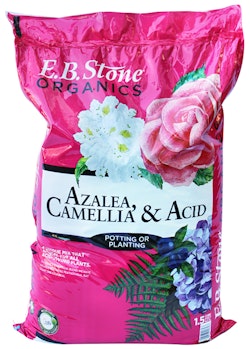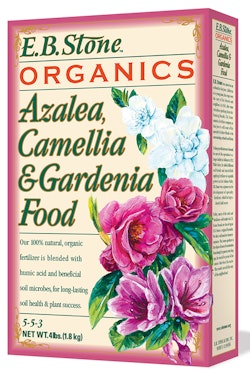 Back to the Be Inspired Blog
Back to the Be Inspired Blog

Something About Camellias
How to Grow Camellias
Camellias are long-lived trees and shrubs that provide year-round glossy-green foliage and cool-season flowers. Cultivars of Camellia japonica (Japonicas) and Camellia sasanqua (Sasanquas) are the most commonly grown types of camellias. There are hybrids as well (look for an “X” in the plant name), created by crossing cultivars to achieve different colors, shapes, or desirable characteristics such as cold hardiness or unusual growth habits. While they’ll do fine if left alone, camellias will truly thrive when provided with appropriate growing conditions, timed pruning and fertilizing, and good garden hygiene.
Selecting the right variety
When selecting camellias for the garden start by looking at bloom time; Sasanquas bloom from mid fall to early winter (early to mid season), Japonicas from mid winter to spring (mid to late season) and hybrids can be either depending on variety. Select plants with different flowering schedules to enjoy blooms for an extended period.
Consider where you’re planning to plant the camellia. Subtle differences in growth habit, bloom size, and bloom color between cultivars means there’s probably a camellia that will perfectly slot into your garden design like a missing puzzle piece. If the camellia will grow near a door or sidewalk you frequent, think about planting a fragrant variety such as Fairy Blush. It’s also good for small gardens, as it matures to 4-5 feet in height and width. Marge Miller™ has an unusual trailing form, making it well-suited for container gardens or planting where it can cascade over a wall. Camellia sasanqua ‘Shishi Gashira’ is a popular multi-use cultivar. It has bright pink blooms with a cluster of prominent yellow stamens and a somewhat spreading form that can easily be trained as a tall groundcover or an espalier. Fast-growing, tall camellia varieties are ideal for hedging or screens, and can be planted as understory trees to add interest in the middle layer of the lands.

Optimal Conditions
- Zone: Most camellia varieties are hardy in zones 7-10, but some, such as the Monrovia Ice Angels® series, are hardy to zone 6.
- Soil: Camellias need slightly acidic soil (pH 5.5-6.5); they don’t grow well in soils with a high pH and will exhibit signs of stress, including yellowing leaves, if the soil is alkaline.
- Moisture: Camellias do not tolerate wet feet; it’s essential that you site them in an area with well-drained soil.
- Light: In general, camellias grow and bloom better in partial shade (morning sun and dappled afternoon shade are ideal conditions) with shelter from hot afternoon sun. This is especially true for young plants, which thrive under the shade of tall trees or when grown on the north side of a house. As they grow larger and their thick canopy of leaves shades and cools their roots, they gradually will accept more sun. Shade provided in winter helps reduce cold damage for camellias growing in zones 6 and 7.
Planting

Timing is critical when planting camellias. Gardeners in warm areas (zones 8-10) can plant in the fall, winter, or spring. In zones 6 and 7 spring is a better time for planting so that the shrubs have the chance to establish a solid root system before cold weather.
To plant, dig a hole that is twice as wide as the rootball and just as deep. Then backfill the bottom two to three inches of the hole and pack it down. Remove the plant from the container and place it in the center of the hole. The top of the rootball should be 2-4 inches above grade. Camellias do not grow well when planted too deep and, in fact, are more sensitive than other plants, so this is an important detail to follow. Fill in around the plant, gently sloping the soil up the sides of the exposed rootball. Do not cover the tops of the rootball. Mulch around the plant, with just a thin layer (1 inch) over the top of the root ball. Water at the time of planting.
We Recommend:
E.B. Stone Organics Azalea, Camellia & Acid Planting Mix
Watering
As with other broadleafed shrubs, camellias need to be watered when newly planted or during times of extreme drought. Established plants (over 3 years old, vigorous, and shading their own roots) get by with little supplemental water. If you do water them, make sure the soil is well drained.
Fertilizing

Feed with an acid-forming azalea or camellia fertilizer in spring, after the flowers have dropped; fertilize again in the midsummer if growth seems sluggish or foliage looks sparse and begins to lose its deep green color (take care to water the plants the day before feeding in summer). Select a fertilizer specifically blended for camellias or azaleas. Apply at the rate recommended on the label. Don’t overdo it, as plants grown in fertile soil need little fertilizer―and never feed plants that are sick or distressed. Do not fertilize after August, as the plants will be entering a period of dormancy. Fertilizer could cause unwanted growth without enough time to harden off before cold weather.
We Recommend:
E.B. Stone Organics Azalea, Camellia & Gardenia Food
Pruning
Prune after blooming has ended. Remove dead or weak wood; thin out growth when it is so dense that flowers have no room to open properly. Shorten lower branches to encourage upright growth; cut back top growth to make lanky shrubs bushier. When pruning, cut just above a scar that marks the end of the previous year’s growth (often a slightly thickened, somewhat rough area where bark texture and color change slightly). Making your cuts just above this point usually forces three or four dominant buds into growth.
Growing in Containers
Camellias are outstanding container plants whether you grow them outdoors on a terrace or indoors in a cool greenhouse. As a general rule, plant gallon-size camellias in 12- to 14-in.-diameter containers, 5-gallon ones in 16- to 18-in. containers. Fill the container with a potting mix containing 50 percent or more organic material. Make sure the container has a generous drainage hole.
Source: Monrovia.com

